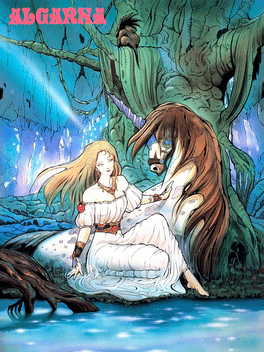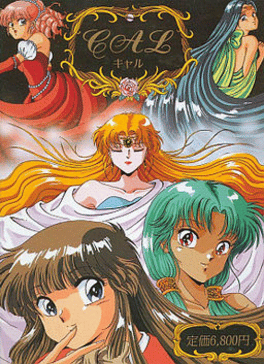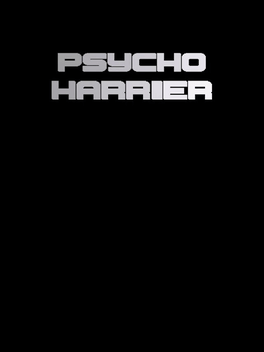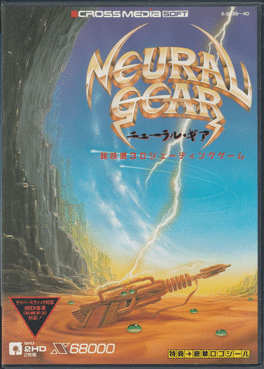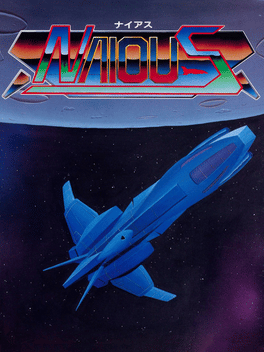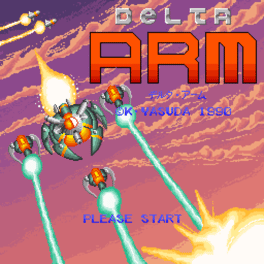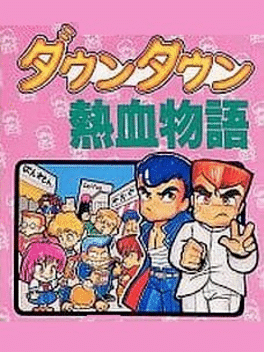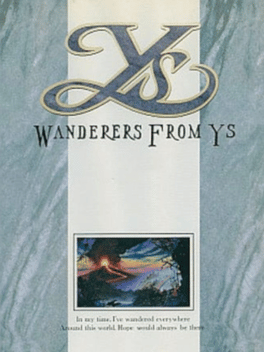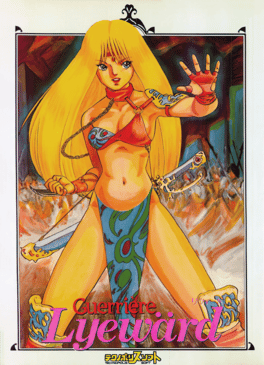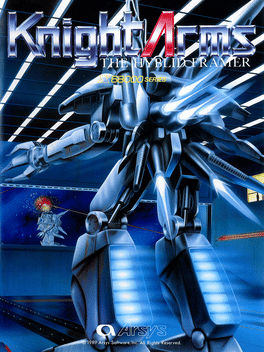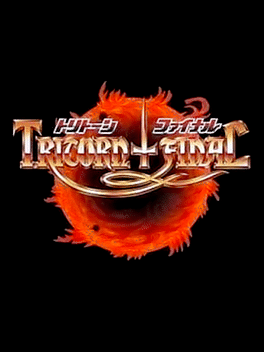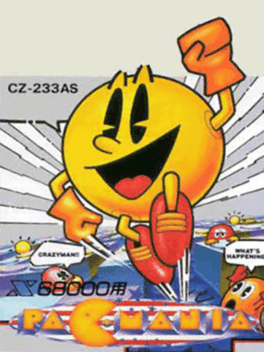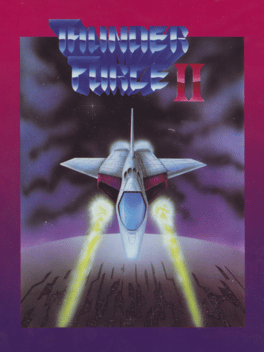New Sharp X68000 Games - Page 4
-
Signatory: Chouinsha
1991
-
Algarna
1991
-
Cal
1991
Cal
1991
The hero of this game is an ordinary high school student (the player has to name him by himself). He is mostly interested in pretty girls, in particular the lovely Mika, with whom he is even ready to discuss books just to get her attention. One day, a beautiful woman appears in front of him out of nowhere. She says that she is Venus, the goddess of love. She comes from a world called Cal, the eternal world populated by lovely girls. She tells the hero that soon he will be needed in that world... and disappears. Was that a dream? Or will our hero really travel to the magical world of Cal and encounter dangers he hasn't even imagined before? -
Psycho Harrier
1990
Psycho Harrier
1990
A doujin recreation of the rail-shooter Space Harrier with Athena Asamiya from SNK's Psycho Soldier. -
Nekketsu Koukou Dodgeball-bu: Soccer-hen
1990
Nekketsu Koukou Dodgeball Bu: Soccer-hen is a port for the Sharp X68000 of the Famicom game with under the same title in Japanese. -
Neural Gear
1990
Neural Gear
1990
Neural Gear is a pseudo-3D scrolling shooter similar to Space Harrier. You play as Emi T. Fonon, a futuristic soldier from the years after World War IV, who wears a bio-powered suit that can fly back in time and destroy time travelling robots. Each level goes back to an earlier date and has more numerous and powerful enemies. The game is completely controlled with the mouse. Left clicking fires the main weapon - yellow energy balls, while right clicking fires a sub weapon, which is chosen at the start of the level. There are four sub weapons to choose from: SPC that shoots powerful blue energy balls, Rockets, Homing Missiles and the most powerful sub weapon in the game "???" which is actually a bomb that can instantly kill all enemies on screen, including bosses but it also take out around 500-600 health. An interesting feature of this game is the health system. The timer at the top of the screen also acts as the health bar and it decreases faster when you get hit. Enemies come in large groups, sometimes in f -
Naious
1990
Naious
1990
Naious is a horizontally scrolling shoot-em-up. The gameplay is fairly traditional and involves navigating outdoor and indoor stages (often with narrow spaces), destroying mobile and stationary enemies on the way. The fighter craft starts with a vulcan gun and can later change to wide shot, laser, and homing missiles. Rather infrequent power-ups appear at set points on the stages and change or enhance the plane's weapons. -
Delta Arm
1990
Delta Arm
1990
Set in the year 2064 this creeping horizontal space-shooter will certainly help you get your SHMUPS on. Different ship configurations give you different shooting types and patterns. -
Downtown Nekketsu Monogatari
1990
Downtown Nekketsu Monogatari (River City Ransom in North America, Street Gangs in Europe) was ported to the Sharp X68000, a Japanese computer platform, and released in April 1990. This version of the game, which was developed by SPS and published by Sharp, features several enhancements to the Famicom original, such as displaying three enemy characters on-screen instead of just two, slightly more colorful graphics, an expanded game world, and new items and special techniques for the player (including some that were only used by certain enemy characters in the Famicom version, such as the headbutt and the whirlwind kick). The new locations includes several new shops (such as a dojo) and the schools of each enemy gang, each featuring two new bosses. In addition to the player's regular stats, the player also has individual stats for all the special techniques their character has acquired. The more frequently a special move is used to finish off enemies, the stronger that particular move becomes. Unlike the Famicom v -
Reinforcer
1990
-
Bubble Bobble
1990
Bubble Bobble
1990
The Sharp X68000 port of Bubble Bobble was developed by Dempa with MTJ's direct supervision. This version includes a hidden minigame called Sybubblun, which features an original set of very difficult levels, with the whole game being given a visual motif to resemble the Arcade game Syvalion. -
Guerrière Lyewärd
1990
Guerrière Lyewärd
1990
After World War III, humans have finally achieved world peace - or so they thought. Malevolent aliens have infected the human organism in a most treacherous way possible, turning young and pretty women into rampaging, violent nymphomaniacs. Only one person can stop the insanity - the attractive secret agent with the codename Lyewärd. Guerrière Lyewärd is a side-scrolling beat-em-up. The gameplay is very simple: the player moves the protagonist through strictly linear stages from left to right, each containing a few types of female enemies that attack the heroine from both sides. The secret agent can punch, kick, and jump. Power-ups such as health-restoring hearts and invincibility appear at set points during the stages, floating in the air. Each stage culminates with a boss battle against a powerful female enemy; defeating the boss leads to a lesbian sex scene. -
Shanghai II
1989
Shanghai II
1989
Shanghai II is a variant of the puzzle game also known as solitaire mahjong. 144 mahjong tiles are arranged in rows and stacked upon each other in various patterns; the player's goal is to remove pairs of matching tiles that do not have adjacent tiles from both sides until the whole board is clear. This variant features six patterns named after animals: tiger, scorpion, monkey, snake, panther, and dragon. The player can choose to display hints or reverse any amount of moves. A mode with a time limit is available as well. -
Knight Arms: The Hyblid Framer
1989
Knight Arms: The Hybrid Framer was part third-person rail shooter and part side-scrolling platformer, released by Arsys Software for the Sharp X68000 computer in 1989. It featured some of the most advanced pseudo-3D sprite-scaling seen on a home system of the 1980's. -
Fantasy Zone
1989
Fantasy Zone
1989
Fantasy Zone is an arcade style shooter for one or two players. The goal is to destroy all of the creatures on each planet and collect as many of the lost coins as possible. At the end of each level is a large enemy that will have to be defeated before moving on to the next world. At various points in the game, the player will be able to find a parts shop, which allows purchasing improvements for his spaceship, including better weapons and faster engines. -
Tritorn Final
1989
Tritorn Final
1989
Tritorn Final is an Action RPG developed by Lee Way and published by XAIN Soft for the Sharp X68000 home computer in 1989. It is the final entry in the Tritorn trilogy. -
Pac-Mania
1989
Pac-Mania
1989
Pac-Mania is a variation on the game Pac-Man. You need to guide Pac-Man around a maze and eat all of the dots on the board to proceed on to the next round. Numerous, multi-colored ghosts also roam the maze trying to stop you. If you eat one of the power pellets in the maze, the ghosts will temporarily turn blue and run from you. Pac-Man can earn bonus points by eating the ghosts when they are in this state. The maze is now shown in isometric perspective and is larger than the screen which will scroll to follow the action. To help get out of tight spots, Pac-Man can now jump. But be careful, because some of the ghosts have learned this trick as well and you could end up in a mid-air collision! -
Pac-Man
1989
Pac-Man
1989
Included as a bonus game bundled with the X68000 port of Pac-Mania. The ghost AI is very off, with the ghosts rarely attacking Pac-Man. -
Thunder Force II
1988
Thunder Force II
1988
A scrolling shooter and sequel to Thunder Force developed by Technosoft originally released for the X68000 computer before being ported to the Sega Mega Drive/Genesis game console. The Sharp X68000 version has an introduction sequence and an extra stage (top and side view) not found in the Sega Mega Drive/Genesis version.

